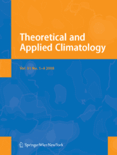
THEORETICAL AND APPLIED CLIMATOLOGY
Scope & Guideline
Connecting Theoretical Foundations with Real-World Applications
Introduction
Aims and Scopes
- Climate Variability and Change:
Research on the effects of climate variability and change, including studies on extreme weather events, seasonal changes, and long-term climate trends. - Hydrological Processes:
Investigations into hydrological cycles, water resource management, and the impact of climate on hydrological extremes such as floods and droughts. - Climate Modeling and Projections:
Utilization of climate models, including CMIP6 and other regional climate models, to project future climate scenarios and assess model performance. - Impact of Climate on Agriculture and Ecosystems:
Studies focusing on the implications of climate change for agriculture, including crop yield predictions and the resilience of ecosystems to changing climatic conditions. - Urban Climate Studies:
Research examining the effects of urbanization on local climates, including urban heat islands and the influence of land use on climate variables. - Climate-Induced Risks and Adaptation Strategies:
Analysis of climate-induced risks, vulnerability assessments, and the development of adaptation strategies for communities and ecosystems. - Remote Sensing and Climate Data Analysis:
Application of remote sensing technologies and innovative statistical methods for analyzing climate data, including precipitation and temperature trends.
Trending and Emerging
- Machine Learning and AI Applications:
There is a rapid increase in the use of machine learning and artificial intelligence techniques for climate modeling, prediction, and data analysis, reflecting a trend towards more sophisticated analytical methods. - Climate Change Adaptation Strategies:
Research focusing on adaptive measures to mitigate the impacts of climate change on agriculture, urban planning, and natural ecosystems is gaining traction, highlighting the need for practical solutions to climate-related challenges. - Integrated Climate-Hydrology Models:
An emerging emphasis on integrated models that combine hydrological and climatic factors to better predict and manage water resources under changing climate conditions. - Climate-Induced Extreme Events:
A growing body of work is dedicated to understanding the occurrence and impacts of extreme weather events, such as floods, droughts, and heatwaves, in the context of climate change. - Remote Sensing Innovations:
Advancements in remote sensing technologies and methodologies are increasingly being applied to monitor climate variables, providing new insights into climate dynamics and environmental changes. - Teleconnections and Climate Patterns:
Research on teleconnection patterns and their influence on regional climates is expanding, providing deeper insights into the interconnectedness of global climate systems.
Declining or Waning
- Historical Climatology:
Research centered on historical climatology and long-term climate reconstructions has seen a decline, as more emphasis is placed on predictive modeling and contemporary climate impacts. - Static Climate Classification Studies:
Traditional approaches to climate classification, such as the Köppen classification system, are becoming less prominent compared to dynamic models that incorporate climate change impacts. - Local Case Studies:
While localized studies remain important, there is a noticeable shift towards broader, comparative analyses across regions, potentially leading to a decline in the number of case studies focusing solely on specific locales. - Traditional Statistical Methods:
Standard statistical methods for trend analysis are being overshadowed by more innovative and complex methodologies, including machine learning and hybrid approaches. - Anthropogenic Climate Impact Assessments:
Direct assessments of anthropogenic impacts on climate systems are becoming less frequent as the focus shifts towards broader climate interactions and feedback mechanisms.
Similar Journals

Journal of Tropical Meteorology
Exploring Atmospheric Wonders in the TropicsJournal of Tropical Meteorology, published by JOURNAL OF TROPICAL METEOROLOGICAL PRESS, is a leading scholarly journal dedicated to advancing the understanding of atmospheric phenomena and meteorological patterns in tropical regions. With an ISSN of 1006-8775, this journal plays a vital role in disseminating high-quality research, focusing on critical issues such as climate variability, weather forecasting, and tropical cyclone dynamics. The journal, which is indexed in Scopus with a respectable rank in the low quartile of Q3 in Atmospheric Science, aims to provide a platform for researchers and professionals to share groundbreaking insights and foster collaboration within the scientific community. Although it follows a traditional access model, the Journal of Tropical Meteorology encourages submissions from a diverse range of disciplines, thus enriching the field with a variety of perspectives. By bridging theory and practical applications, this journal serves as an essential resource for students, researchers, and practitioners striving to expand their knowledge and contribute to the global conversation on meteorology.

METEOROLOGY AND ATMOSPHERIC PHYSICS
Elevating Knowledge in Meteorological SciencesMETEOROLOGY AND ATMOSPHERIC PHYSICS is a premier journal published by SPRINGER WIEN, dedicated to advancing the study of atmospheric phenomena and weather-related sciences. With an ISSN of 0177-7971 and an E-ISSN of 1436-5065, the journal has established itself as an important contributor in the field, particularly noted for its contributions in atmospheric science, holding a Q3 ranking in the 2023 category quartiles. Covering a wide array of topics from meteorological modeling to the physics of the atmosphere, it serves researchers, professionals, and students alike, facilitating the dissemination of significant findings and innovative research. The journal’s acceptance of articles until 2024 encourages a continuous influx of knowledge, and despite its lack of Open Access, it plays a crucial role in enriching the academic landscape for those engaged in Earth and planetary sciences, holding a commendable rank of 78 out of 148 in Scopus. Located in the scenic city of Vienna, Austria, the journal is positioned to harness the vibrancy of the academic community, providing a platform for valuable insights that can drive forward the field of meteorology and atmospheric physics.
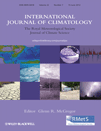
INTERNATIONAL JOURNAL OF CLIMATOLOGY
Illuminating the path to informed climate policy.INTERNATIONAL JOURNAL OF CLIMATOLOGY, published by WILEY, is a leading peer-reviewed journal dedicated to advancing our understanding of climate science. As a prominent periodical within the Q2 category of Atmospheric Science, it encompasses a wide range of topics related to climatology, including climate variability, modeling, and impacts of climate change, making it an essential resource for researchers, professionals, and students in the field. With a history of publication spanning from 1989 to 2024, the journal has established a strong reputation for disseminating high-quality research that informs policy and practice. Though it does not offer Open Access options, its articles are accessible to a broad audience through institutional subscriptions, ensuring that significant findings can reach those who need them most. The INTERNATIONAL JOURNAL OF CLIMATOLOGY plays a crucial role in connecting academia with pressing environmental issues, thus fostering dialogue and innovation in climate research.
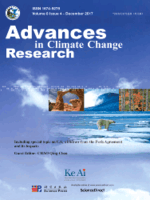
Advances in Climate Change Research
Pioneering Insights into Climate Change DynamicsAdvances in Climate Change Research is a premier open-access journal dedicated to advancing the understanding of climate change and its wide-ranging impacts on our planet. Published by KEAI PUBLISHING LTD since 2010, it has established itself as a leading forum for research in Atmospheric Science, Global and Planetary Change, and Environmental Management, achieving a notable Q1 ranking across these categories as of 2023. The journal, which operates out of Beijing, China, ensures that researchers, professionals, and students have unrestricted access to cutting-edge studies, enhancing global knowledge on climate change mitigation and policy development. With impressive Scopus rankings, including 11th out of 148 in Atmospheric Science, it represents a vital resource for those seeking to contribute to climate science and its applications. By submitting your work to this influential journal, you join a global community committed to addressing one of the most pressing challenges of our time.
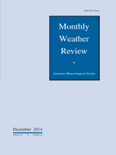
MONTHLY WEATHER REVIEW
Advancing the Frontiers of Atmospheric ScienceMONTHLY WEATHER REVIEW, published by the American Meteorological Society, is a leading journal in the field of atmospheric science, recognized for its rigorous peer-reviewed articles that contribute significantly to the understanding of weather patterns and climate systems. With an impressive Q1 ranking in the 2023 category quartiles and a strong standing (#41 out of 148) in the Earth and Planetary Sciences Scopus rankings, the journal serves as an essential resource for researchers, professionals, and students alike. Although it does not currently offer open access, its comprehensive coverage of meteorological research spanning from 1960 to 2024 makes it invaluable for those seeking to stay at the forefront of developments in weather analysis and prediction. Situated in Boston, Massachusetts, this journal not only showcases pioneering research but also emphasizes the importance of collaborative efforts in the meteorological community, ultimately contributing to advancements in our understanding of atmospheric phenomena.

Idojaras
Cultivating a deeper understanding of our changing atmosphere.Idojaras, a prominent journal published by the Hungarian Meteorological Service, has been a vital contributor to the field of Atmospheric Science since its inception in 1980. With a specific focus on the intricacies of weather phenomena, climate variability, and environmental change, this journal serves as a platform for researchers and professionals to disseminate their findings. Although currently categorized in Q4 of Atmospheric Science with a Scopus rank of #122 out of 148, Idojaras is dedicated to improving its impact and visibility through rigorous peer-reviewed research and comprehensive analyses that engage a global audience. This scholarly publication, which operates without open access, is pivotal for advancing knowledge in meteorological studies, thereby appealing not only to seasoned scientists but also to students and scholars eager to explore this dynamic field. Located in Budapest, Hungary, the journal continues to strive for excellence in its coverage through the convergence of past and present meteorological research, making it a significant resource for anyone interested in the atmospheric sciences.
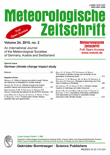
METEOROLOGISCHE ZEITSCHRIFT
Unlocking the Secrets of the AtmosphereMETEOROLOGISCHE ZEITSCHRIFT is a distinguished academic journal dedicated to the field of meteorology and atmospheric sciences, published by E SCHWEIZERBARTSCHE VERLAGSBUCHHANDLUNG. With an ISSN of 0941-2948 and an E-ISSN of 1610-1227, this journal has been an invaluable resource for researchers, professionals, and students since its inception. It has embraced an Open Access model since 2014, promoting wider dissemination of research findings. Based in Stuttgart, Germany, the journal is recognized for its rigorous peer-review process and is currently positioned in the Q3 quartile for Atmospheric Science as per the 2023 category rankings. Additionally, it ranks #97 out of 148 in the Scopus database, placing it in the 34th percentile among Earth and Planetary Sciences. Covering a broad spectrum of topics relevant to meteorology, METEOROLOGISCHE ZEITSCHRIFT serves as a platform for innovative research and theoretical contributions, aiming to advance understanding of atmospheric phenomena and their implications for climate and weather. Researchers and practitioners alike will find valuable insights within its pages, making it a significant asset in the landscape of meteorological scholarship.
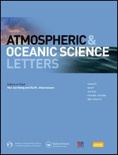
Atmospheric and Oceanic Science Letters
Unlocking the Secrets of Our Planet's SystemsAtmospheric and Oceanic Science Letters is a premier open-access journal dedicated to the rapidly evolving fields of atmospheric science and oceanography. Published by KEAI PUBLISHING LTD, this journal aims to foster research dissemination and collaboration by providing a platform for high-quality research articles, reviews, and case studies that address critical issues impacting atmospheric and oceanic systems. With an impressive impact factor reflecting its esteemed position—including being ranked Q2 in Atmospheric Science and Q1 in Oceanography in 2023—this journal is an essential resource for researchers, professionals, and students alike. The journal's Open Access model, adopted since 2016, ensures that groundbreaking research is readily available to a global audience, enhancing knowledge transfer and facilitating innovative solutions to environmental challenges. Operating out of the United Kingdom and reaching an international readership, Atmospheric and Oceanic Science Letters plays a pivotal role in shaping our understanding of the interactions between the atmosphere and oceans, making it a vital publication for anyone aiming to stay at the forefront of these dynamic scientific fields.
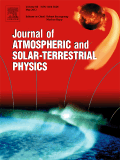
JOURNAL OF ATMOSPHERIC AND SOLAR-TERRESTRIAL PHYSICS
Exploring the Dynamics of Our Atmosphere and BeyondJournal of Atmospheric and Solar-Terrestrial Physics, published by Pergamon-Elsevier Science Ltd, stands as a pivotal academic resource in the realms of Atmospheric Science, Geophysics, and Space and Planetary Science. With an ISSN of 1364-6826 and an E-ISSN of 1879-1824, this journal encompasses a robust collection of research findings and reviews that address the intricacies of atmospheric processes and solar-terrestrial interactions. The journal has shown consistent academic performance, earning commendable rankings in 2023, including Q3 in Atmospheric Science and Q2 in Geophysics, reflecting its importance for scholarly communication and advancement in these fields. Spanning an impressive convergence of research from 1997 to 2024, it aims to foster interdisciplinary collaboration and inspire innovations among researchers, professionals, and students. Although it currently does not offer open access, the journal is committed to disseminating high-quality content that continues to drive forward our understanding of complex environmental phenomena.

Weather and Climate Dynamics
Advancing the Science of Atmosphere and ClimateWeather and Climate Dynamics, an esteemed journal published by COPERNICUS GESELLSCHAFT MBH, focuses on the intricate relationships and processes governing climate and weather patterns, advancing our understanding of atmospheric sciences. Since its launch in 2020, this Open Access journal has rapidly gained recognition, achieving a commendable Q1 status in Atmospheric Science and ranking 39th out of 148 journals in the Earth and Planetary Sciences category, placing it in the 73rd percentile. Based in Germany, the journal aims to provide a platform for innovative research, sharing crucial findings that contribute to tackling global climate challenges. Researchers, professionals, and students alike are encouraged to explore the wealth of knowledge contained within its pages, as it continues to shape the discourse on weather and climate dynamics through rigorous and impactful scholarship.